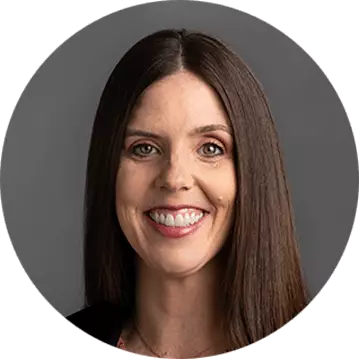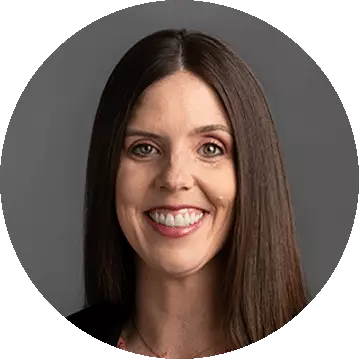What is a portfolio manager?

Written by Trey Edgington

Reviewed by Kathryn Uhles, MIS, MSP, Dean, College of Business and IT

Helping people and organizations manage their investments toward growth takes careful planning and thoughtful decision-making. The professionals who work in this field study the market to choose the right mix of assets — the portfolio — and adjust strategies to help clients meet their financial goals.
Where do portfolio managers work?
Portfolio managers work for a range of investment firms, including banks, hedge funds, wealth management firms, pension funds and insurance companies, to name a few.Ěý
What is an investment portfolio?
Before discussing the role and responsibilities of portfolio managers, it may be a good idea to ask (and answer), “What is an investment portfolio?”
An investment portfolio is an array of investments for either an individual or an organization. Portfolios may contain bonds, stocks, mutual funds and exchange-traded funds (ETF), and investments like art, real estate or cryptocurrency. The objective is to earn returns over time — long and short term — while managing the risks in accordance with the risk tolerance set by the client.
Types of portfolios include:
- Income portfolio: Includes coupon-yielding bonds and dividend-paying stocks, both of which pay investors on a regular, scheduled basis.
- Balanced portfolio: Holds a combination of stocks and bonds, with the goal of spreading risk across investments.
- Growth portfolio: Consists primarily of stocks. These stocks are expected to grow over time but may experience price dips in the short term.ĚýÂ Â
Portfolio manager defined
A financial professional who manages portfolios is responsible for creating and overseeing investment portfolios that will meet the financial objectives of clients. They analyze market trends, select assets and adjust strategies to optimize returns while managing risk. Clients can range from individual investors to large institutions, each with unique goals and risk tolerances.
Managers for institutional and individual portfolios
Finance professionals who manage portfolios can specialize in investments that may be good for individuals or institutions. Both types of managers strive to create portfolios that work for their clients, but they often use different strategies due to the size and complexity of the investment.
Financial professionals who manage the assets of individual investors have different goals than institutional investors. Individuals may want to save for retirement, build an emergency fund, pay for their children’s education or do a combination of those things. Portfolios for individuals typically contain smaller amounts of money than those for institutions. The manager may design a fund in a way that reflects their client’s risk tolerance, among other factors.
Institutional investors, on the other hand, are organizations that collect vast amounts of money to invest in pension funds, foundations and endowments, to name a few. They may focus on long-term growth strategies in order to meet future financial obligations. These investors may also be concerned with long-term stability and capital preservation.Ěý
Active vs. passive portfolio management
As the names suggest, active and passive portfolio management differ in the level of engagement with the portfolios.
Managing active portfolios requires constant monitoring of the market to outperform indices such as the Russell 1000 Index or the S&P 500 Index. As the market changes, managers may need to adjust by buying or selling stocks and other investment vehicles.
Those who manage passive portfolios take a hands-off approach by designing investment strategies that closely follow a specific market index, such as the NASDAQ or Dow Jones Industrial Average. Rather than trying to outperform the market, they aim to match its performance over time, using the index as a benchmark for expected returns.Ěý
Sector-specific portfolio managersÂ
Sector-specific managers oversee investment vehicles like mutual funds and ETFs that invest in a certain industry or sector of the economy, all with an eye toward outperforming the market overall. Because these funds lack a level of diversity, they may be more volatile than a fund with a mixed group of sectors.Ěý
Under the (GICS), there are 11 sectors by which companies can be classified. This short list shows some prime examples:
- Energy sector funds
- Commodities sector funds
- Healthcare sector funds
- Technology sector funds
- Consumer staples sector funds
What else do portfolio managers do?
The responsibilities of investment pros who manage portfolios go well beyond creating investment funds. Some of their responsibilities include:
- Assessing client needs: They must understand a client’s financial goals, investment timeline and risk tolerance to tailor investment strategies. ​
- Selecting investments: This involves conducting comprehensive research to select a diversified mix of assets that will optimize returns while managing risk.
- Monitoring performance: Regular analysis of investment performance ensures that portfolios remain aligned with clients’ objectives.  ​
- Managing risk: Investment professionals must identify potential risks within the portfolio and implement strategies to mitigate them.
- Managing client communication: Clients must be informed about their portfolio’s performance and any significant changes. ​
By effectively managing these responsibilities, portfolio managers aim to help clients achieve their financial goals through informed and strategic investment decisions.
Portfolio investment strategies
An investment strategy is a structured approach used to allocate assets in a way that aligns with a client’s financial goals, risk tolerance and time horizon. The choice of strategy depends on the client’s needs and market conditions. In addition to the active and passive strategies mentioned above, the following are a few of the others they may use:
- Aggressive strategy: Seeks high returns by investing in high-risk, high-reward assets such as growth stocks, emerging markets or tech startups. This approach is typically suitable for investors with a long time horizon and a higher tolerance for market volatility.
- Defensive strategy: Prioritizes capital preservation and stability. This approach focuses on less volatile investments such as blue-chip stocks, bonds and dividend-paying equities. These types of investments are more likely to have predictable returns and stronger investor confidence. Defensive strategies are often used during uncertain market conditions or for clients nearing retirement.
- Balanced strategy: Offers a middle ground by blending elements of both aggressive and defensive approaches. This strategy is often appropriate for clients (ideally in their mid-30s to 40s) who want steady progress toward financial goals without excessive exposure to market volatility.
Client communication and reporting
The relationship between portfolio managers and their clients begins with communication. Retaining a stable client base requires regular contact regarding issues such as economic trends, market conditions and updated investment research. In fact, part of these managers’ fiduciary duty includes meeting with their clients at least once a year to ensure that each client’s investment goals haven’t changed. If their goals have changed, it’s time to adjust the portfolio.
Some investment firms now have investor portals that give investors secure access to key details about the funds they’ve invested in. These details may include analytics and other metrics to show transparency.ĚýÂ
In addition to meetings and investor portals, finance professionals who manage portfolios must provide reports tailored to each client. These reports may be very brief (e.g., “sell”) or they could be hundreds of pages long. The information contained within should cover the rationale and evidence for any changes or suggested changes.
Reports may also contain information about what the manager is going to do for the client (or prospective client) and how much these services cost. Â
Skills for portfolio managers
People who manage portfolios need to have both analytical and quantitative skills, as well as interpersonal and communication skills.
Useful hard skills include:
- In-depth knowledge of portfolio theory, economics and financial markets
- The ability to efficiently interpret data
- A strong aptitude for financial analysis and research
- Regulatory compliance knowledge
Because this role requires significant client communication, soft skills are also crucial. The ability to listen and communicate can affect the success of the individual who manages portfolios. Being a good listener helps managers understand the goals and needs of their clients.
Other soft skills include:
- Emotional intelligence
- Decision-making
- Time management
Finance education for portfolio managers and beyond
Portfolio managers play a key role in creating, adjusting and managing financial funds on behalf of investors. °®¶ą´«Ă˝ offers a variety of online programs that may be of interest to future finance professionals:
Positions within this field may require a FINRA license or other industry certifications. UOPX does not prepare students for industry certifications. However, it does prepare for many other useful skills, such as financial data, variance analysis, and micro- and macroeconomics, that are relevant to the field. Learn more about the online programs at °®¶ą´«Ă˝.Ěý

ABOUT THE AUTHOR
Trey Edgington holds a Master of Arts in creative writing from the University of North Texas, and his short fiction has been published in several literary journals. His professional journey also includes more than 15 years of experience in higher education and healthcare marketing. Over the course of his career, he has held such roles as adjunct instructor of English, senior content editor & writer, and content and SEO manager. Most recently, he has taken on the role of generative AI language consultant.

ABOUT THE REVIEWER
Currently Dean of the College of Business and Information Technology, Kathryn Uhles has served °®¶ą´«Ă˝ in a variety of roles since 2006. Prior to joining °®¶ą´«Ă˝, Kathryn taught fifth grade to underprivileged youth in Phoenix.
This article has been vetted by °®¶ą´«Ă˝'s editorial advisory committee.Ěý
Read more about our editorial process.





